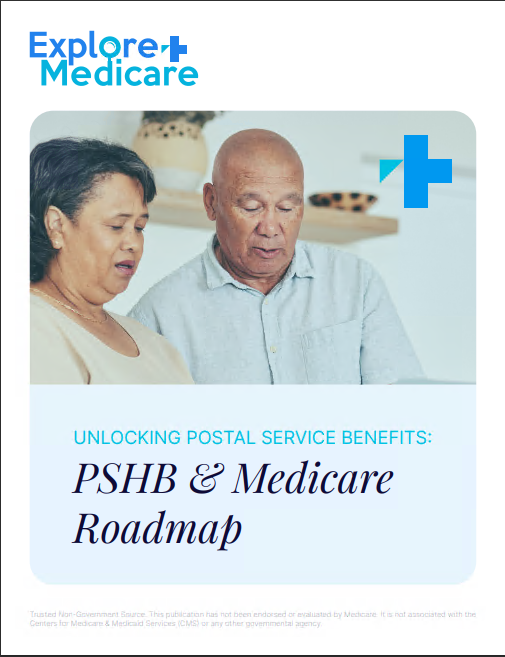Key Takeaways
-
While Medicare may seem straightforward, the 2025 updates include multiple cost layers, new coverage rules, and eligibility nuances that can catch you off guard if you don’t read the details carefully.
-
Understanding what isn’t covered by Medicare in 2025 is just as important as understanding what is—especially when it comes to prescription drug costs, late penalties, and coverage gaps.
Understanding the Basics: What You Think You Know
On the surface, Medicare in 2025 still has its familiar structure:
-
Part A (Hospital Insurance)
-
Part B (Medical Insurance)
-
Part C (Medicare Advantage)
-
Part D (Prescription Drug Coverage)
You likely already know that most people become eligible for Medicare at age 65. If you’ve worked and paid Medicare taxes for at least 10 years, you typically qualify for premium-free Part A. However, that’s where the simplicity ends.
Medicare Part A in 2025: What the Headlines Don’t Say
Medicare Part A is commonly viewed as the “hospital plan,” but it comes with out-of-pocket costs that may surprise you.
-
Inpatient deductible: $1,676 per benefit period
-
Coinsurance for hospital stays: $419 per day for days 61–90, and $838 for each lifetime reserve day
-
Skilled nursing facility care: $0 for the first 20 days; $209.50 per day for days 21–100
The term “benefit period” can be misleading. It doesn’t follow a calendar year but begins when you’re admitted and ends after you haven’t received inpatient care for 60 consecutive days. Multiple hospitalizations in a year could mean paying the deductible more than once.
Medicare Part B in 2025: The Layer You Can’t Skip
Medicare Part B covers doctor visits, outpatient services, preventive care, and durable medical equipment. It’s not optional if you want full coverage.
-
Monthly premium: $185 (standard amount)
-
Annual deductible: $257
-
Coinsurance: Typically 20% of Medicare-approved costs
What’s often overlooked is that if you delay enrollment and don’t have other creditable coverage, you may face a permanent late enrollment penalty—10% for each full 12-month period you were eligible but didn’t sign up.
And don’t forget about the Income-Related Monthly Adjustment Amount (IRMAA). If your income is above a certain threshold, you’ll pay more than the standard premium.
Medicare Part D in 2025: The $2,000 Question
This year marks a significant change in prescription drug coverage. Medicare Part D has eliminated the “donut hole” entirely and introduced a $2,000 out-of-pocket cap.
That sounds simple until you realize what counts toward that cap:
-
Your deductible (up to $590 in 2025)
-
Coinsurance and copayments
-
Payments made by others on your behalf (like charities or family)
However, premiums and any late enrollment penalties do not count toward the cap. If you skip enrolling in Part D when first eligible and lack other creditable drug coverage, you’ll face a 1% penalty for each month you delay.
What Medicare Advantage Promises vs. What You Get
Medicare Part C, or Medicare Advantage, bundles Parts A, B, and usually D into one plan. While it may advertise extra benefits like vision or dental, it’s not without limitations.
-
You must still pay your Part B premium.
-
Many plans require staying within a network.
-
Coverage rules and cost-sharing vary between plans.
In 2025, more Medicare Advantage plans are reducing supplemental benefits like transportation or over-the-counter item allowances. Don’t assume all plans offer the same perks.
When Medicare Doesn’t Cover What You Expect
Many people assume Medicare covers everything once enrolled. In reality, there are notable gaps in 2025:
-
Long-term custodial care isn’t covered.
-
Routine dental, vision, and hearing services are often excluded.
-
Overseas medical care is not covered in most cases.
-
Alternative treatments like acupuncture and chiropractic are only covered under narrow conditions.
You may need separate supplemental coverage to fill these gaps—or risk high out-of-pocket costs.
Special Enrollment and Timelines You Can’t Afford to Miss
In 2025, enrollment timing is everything. Missing a window can mean waiting months for coverage—or paying penalties for life.
-
Initial Enrollment Period (IEP): Starts 3 months before your 65th birthday, ends 3 months after
-
General Enrollment Period (GEP): January 1 to March 31 (if you missed IEP)
-
Annual Enrollment Period (AEP): October 15 to December 7
-
Medicare Advantage Open Enrollment Period (MA OEP): January 1 to March 31 (for switching plans)
Special Enrollment Periods (SEPs) apply if you lose employer coverage or experience other qualifying events. But you must act within strict deadlines—typically 63 days from the event.
The Hidden Cost of Late Decisions
Postponing Medicare decisions can carry long-term consequences:
-
Part B penalty: 10% for every 12-month delay, for life
-
Part D penalty: 1% of the national base premium per delayed month, for life
-
Gaps in coverage: Delayed enrollment may leave you without access to critical services
These penalties add up. Even if you’re still working, be sure your employer coverage is Medicare-creditable to avoid them.
IRMAA and How Your Taxes Come Back to Haunt You
In 2025, IRMAA affects anyone with a Modified Adjusted Gross Income (MAGI) above $106,000 (individuals) or $212,000 (married couples).
-
You may pay hundreds more per month for Part B and Part D.
-
IRMAA is based on your 2023 tax return.
-
If your income drops due to retirement, you can request a reconsideration using a “life-changing event” form.
Many retirees are surprised when they discover that their income from two years ago dictates today’s Medicare costs.
Coordination with Other Insurance
Medicare doesn’t always act as your primary payer. In some cases, especially if you’re still employed or covered by a spouse’s plan, Medicare may be secondary.
Here’s how it generally works:
-
Employer coverage (20+ employees): Employer insurance pays first
-
Employer coverage (<20 employees): Medicare pays first
-
Retiree coverage: Usually secondary to Medicare
-
COBRA: Medicare typically pays first
Failing to enroll in Medicare when it should be primary can result in claim denials from your other insurance.
What’s New in 2025 That You Might Miss
A few other changes are easy to overlook but can significantly impact your coverage:
-
Prescription Payment Plan (PPP): You can opt to spread out drug costs over the year rather than pay them all at once.
-
Mid-Year Notification Letter: Between June 30 and July 31, Medicare Advantage enrollees receive a report of unused benefits to encourage timely use.
-
Special Needs Plans (SNPs): The number of these plans is growing, but each has strict eligibility requirements.
These updates are designed to help, but only if you take advantage of them. Read every letter Medicare sends you.
The Fine Print That Catches Most People Off Guard
Some of the most misunderstood aspects of Medicare involve assumptions that aren’t true:
-
Enrolling in Part A doesn’t mean you’re fully covered. You still need Part B for most outpatient care.
-
Medicare isn’t free. Most people pay at least the Part B premium, and possibly more.
-
Changing plans isn’t always simple. You may need to answer health questions or wait for a specific enrollment window.
-
High out-of-pocket limits still exist. While some protections are in place, there’s no true out-of-pocket maximum for Original Medicare unless you have supplemental coverage.
Understanding these details helps you avoid costly surprises.
Why a Licensed Agent Can Help You Avoid Pitfalls
Even though Medicare is a federal program, the options you choose within it—especially with Part D or Medicare Advantage—can vary dramatically. A licensed agent can:
-
Help verify whether your doctors and prescriptions are covered
-
Explain coordination with any employer or retiree plans
-
Assist in filing for IRMAA relief
-
Guide you through enrollment windows so you avoid penalties
Make Sure You Understand What You’re Signing Up For
Medicare in 2025 might look simple from a distance, but the closer you get, the more important the fine print becomes. Timelines, penalties, eligibility rules, and cost-sharing details all play a role in your overall experience—and your finances.
Before making any final choices, speak to a licensed agent listed on this website for personalized guidance. It’s the best way to ensure your plan aligns with both your health needs and your financial goals.







